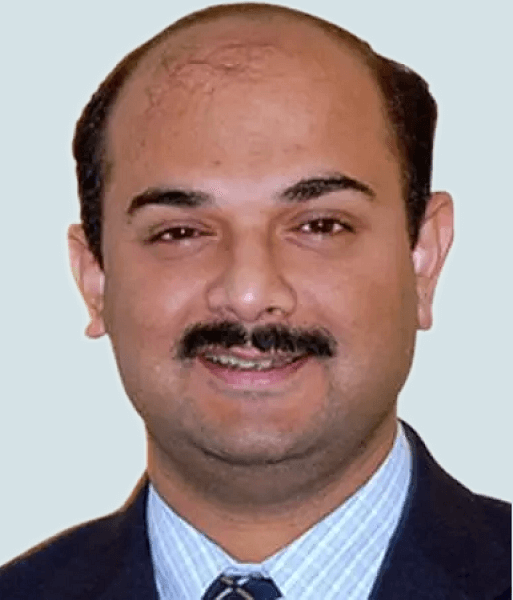Understanding the Global Wound Care Market and India’s Role as a Key Player

The global wound care market is a critical component of the healthcare industry, driven by an increasing prevalence of chronic wounds, surgical procedures, and a growing aging population. The wound care segment includes advanced technologies, innovative products, and therapeutic approaches to expedite wound healing and prevent infections. With technological advancements in wound care products and a growing emphasis on patient-centric treatment approaches, the wound care market has evolved and expanded significantly in recent years. As healthcare systems worldwide continue to prioritize efficient wound care solutions, the global wound care market is poised for further development and innovation.
What are the different segments of the global wound care market?
The global wound care market can be segmented into various categories based on factors such as product type, wound type, end user, and geography. Here are some common segments within the wound care market:
- Product Type:
- Advanced Wound Dressings: Includes films, foams, hydrocolloids, hydrogels, alginates, and collagen dressings.
- Sutures and Staples: Traditional methods for wound closure.
- Topical Agents: Antiseptics, antibiotics, and other topical solutions.
- Wound Closure Devices: Surgical staples, hemostats, and tissue sealants.
- Wound Type:
- Chronic Wounds: Such as diabetic ulcers, pressure ulcers, and venous ulcers.
- Acute Wounds: Resulting from surgery or trauma.
- Surgical and Trauma Wounds: Wounds resulting from surgical procedures or accidents.
- End User:
- Hospitals and Specialty Clinics: Primary users of wound care products for various types of wounds.
- Long-Term Care Facilities: Catering to chronic wound management.
- Home Healthcare: Products for patient self-care and caregiver assistance.
- Geography:
- North America, Europe, Asia-Pacific, Latin America, Middle East, and Africa: Different regions may have varying healthcare needs and preferences.
- Others:
- Biological Wound Care: Products derived from living organisms to promote healing.
- Negative Pressure Wound Therapy (NPWT): Involves the use of a vacuum dressing to promote healing.
- Type of Care:
- Primary Care, Secondary Care, Tertiary Care: Different levels of healthcare may require different wound care products.
How is India emerging as a key player in the market by driving innovation in wound management?
In India, conventional wound care techniques were historically common, but things have changed drastically. We have seen a paradigm shift towards enhanced wound care management with the arrival of new technologies. India has been leading the way in medical innovation and healthcare, particularly in the area of wound care. India’s emergence as a key player in the wound management market can be attributed to several factors:
- Research and development (R&D): To create cutting-edge technology and solutions for wound care, Indian businesses and research institutes have been investing in R&D. This comprises cutting-edge dressings, antibacterial treatments, and bioactive substances intended to speed up the healing of wounds.
- Accessibility and Affordability: India’s population is huge and has a wide range of healthcare requirements. It is crucial to concentrate on developing accessible and reasonably priced wound care treatments. Indian businesses frequently seek to create affordable goods without sacrificing quality.
- Technology Adoption: The adoption of technology, including telemedicine and digital health solutions, has facilitated better wound care management. These technologies can enable healthcare professionals to monitor wounds remotely and provide timely interventions.
- Collaborations and Partnerships: Indian companies often collaborate with international partners for technology transfer and joint research ventures. These collaborations help bring global expertise into the Indian healthcare system, fostering innovation in wound management.
- Government Initiatives: Government initiatives to promote healthcare research and development, as well as entrepreneurship, have contributed to advancements in wound management. Programs such as “Make in India” encourage the domestic manufacturing of medical devices, including those related to wound care.
- Education and Training: Keeping medical personnel up to date on the newest methods and supplies for managing wounds is becoming increasingly important. Workshops and training sessions facilitate knowledge sharing and guarantee the efficient use of creative solutions.
- Startups and Entrepreneurship: The startup ecosystem in India has seen the emergence of companies focused on developing innovative solutions for healthcare challenges. Some startups specifically target wound management, bringing fresh ideas and products to the market.
- Global Market Presence: Indian businesses are progressively making their way into the international wound care sector. They are supplying wound care goods to other nations, which helps to establish India as a major force in the world healthcare market.
How is Serigen contributing to the global wound care market as an innovation-driven medical devices company?
Serigen is pioneering cutting-edge research in the field of silk-based medical devices. Seriderm, our next-gen non-adherent and absorbent wound dressing is powered by the goodness of 95% silk protein. Seriderm expedites wound healing and keeps the wound environment healthy with its optimal fluid-handling properties. Our wound dressing is ideal for the management of a wide range of wounds, including diabetic wounds, non-healing surgical/trauma wounds, pressure ulcers, donor sites, and second-degree burns. With Seriderm, Serigen is offering an innovative and superior wound care solution to diverse patient populations.
Conclusion
Fuelled by cutting-edge research and the demand for patient-centric wound care solutions for a wide variety of wounds, the global wound care market is rapidly expanding and evolving. India is emerging as a key player in this market with various research initiatives and programs to develop modern wound care products. With its cutting-edge technology that utilizes silk protein to develop Seriderm, an advanced wound care solution, Serigen is a notable contributor to global wound care innovation. After a remarkable performance in clinical trials and a successful launch in India, Seriderm will be launching in international markets soon to cater to the unmet needs of patients across the globe.
References
1. https://www.marketsandmarkets.com/Market-Reports/wound-care-market-371.html
2. https://www.coherentmarketinsights.com/market-insight/india-advanced-wound-care-management-market-3846
3. https://www.linkedin.com/pulse/embracing-wound-care-innovation-revolutionizing-healthcare-amit-gawri/

Author Bio – Amit Gawri is Vice President – Sales & Marketing at Serigen Mediproducts. He holds a degree in Pharmacy and has approximately 20 years of professional experience in the Pharmaceutical and MedTech industry.

The global wound care market is a critical component of the healthcare industry, driven by an increasing prevalence of chronic wounds, surgical procedures, and a growing aging population. The wound care segment includes advanced technologies, innovative products, and therapeutic approaches to expedite wound healing and prevent infections. With technological advancements in wound care products and a growing emphasis on patient-centric treatment approaches, the wound care market has evolved and expanded significantly in recent years. As healthcare systems worldwide continue to prioritize efficient wound care solutions, the global wound care market is poised for further development and innovation.
What are the different segments of the global wound care market?
The global wound care market can be segmented into various categories based on factors such as product type, wound type, end user, and geography. Here are some common segments within the wound care market:
- Product Type:
- Advanced Wound Dressings: Includes films, foams, hydrocolloids, hydrogels, alginates, and collagen dressings.
- Sutures and Staples: Traditional methods for wound closure.
- Topical Agents: Antiseptics, antibiotics, and other topical solutions.
- Wound Closure Devices: Surgical staples, hemostats, and tissue sealants.
- Wound Type:
- Chronic Wounds: Such as diabetic ulcers, pressure ulcers, and venous ulcers.
- Acute Wounds: Resulting from surgery or trauma.
- Surgical and Trauma Wounds: Wounds resulting from surgical procedures or accidents.
- End User:
- Hospitals and Specialty Clinics: Primary users of wound care products for various types of wounds.
- Long-Term Care Facilities: Catering to chronic wound management.
- Home Healthcare: Products for patient self-care and caregiver assistance.
- Geography:
- North America, Europe, Asia-Pacific, Latin America, Middle East, and Africa: Different regions may have varying healthcare needs and preferences.
- Others:
- Biological Wound Care: Products derived from living organisms to promote healing.
- Negative Pressure Wound Therapy (NPWT): Involves the use of a vacuum dressing to promote healing.
- Type of Care:
- Primary Care, Secondary Care, Tertiary Care: Different levels of healthcare may require different wound care products.
How is India emerging as a key player in the market by driving innovation in wound management?
In India, conventional wound care techniques were historically common, but things have changed drastically. We have seen a paradigm shift towards enhanced wound care management with the arrival of new technologies. India has been leading the way in medical innovation and healthcare, particularly in the area of wound care. India’s emergence as a key player in the wound management market can be attributed to several factors:
- Research and development (R&D): To create cutting-edge technology and solutions for wound care, Indian businesses and research institutes have been investing in R&D. This comprises cutting-edge dressings, antibacterial treatments, and bioactive substances intended to speed up the healing of wounds.
- Accessibility and Affordability: India’s population is huge and has a wide range of healthcare requirements. It is crucial to concentrate on developing accessible and reasonably priced wound care treatments. Indian businesses frequently seek to create affordable goods without sacrificing quality.
- Technology Adoption: The adoption of technology, including telemedicine and digital health solutions, has facilitated better wound care management. These technologies can enable healthcare professionals to monitor wounds remotely and provide timely interventions.
- Collaborations and Partnerships: Indian companies often collaborate with international partners for technology transfer and joint research ventures. These collaborations help bring global expertise into the Indian healthcare system, fostering innovation in wound management.
- Government Initiatives: Government initiatives to promote healthcare research and development, as well as entrepreneurship, have contributed to advancements in wound management. Programs such as “Make in India” encourage the domestic manufacturing of medical devices, including those related to wound care.
- Education and Training: Keeping medical personnel up to date on the newest methods and supplies for managing wounds is becoming increasingly important. Workshops and training sessions facilitate knowledge sharing and guarantee the efficient use of creative solutions.
- Startups and Entrepreneurship: The startup ecosystem in India has seen the emergence of companies focused on developing innovative solutions for healthcare challenges. Some startups specifically target wound management, bringing fresh ideas and products to the market.
- Global Market Presence: Indian businesses are progressively making their way into the international wound care sector. They are supplying wound care goods to other nations, which helps to establish India as a major force in the world healthcare market.
How is Serigen contributing to the global wound care market as an innovation-driven medical devices company?
Serigen is pioneering cutting-edge research in the field of silk-based medical devices. Seriderm, our next-gen non-adherent and absorbent wound dressing is powered by the goodness of 95% silk protein. Seriderm expedites wound healing and keeps the wound environment healthy with its optimal fluid-handling properties. Our wound dressing is ideal for the management of a wide range of wounds, including diabetic wounds, non-healing surgical/trauma wounds, pressure ulcers, donor sites, and second-degree burns. With Seriderm, Serigen is offering an innovative and superior wound care solution to diverse patient populations.
Conclusion
Fuelled by cutting-edge research and the demand for patient-centric wound care solutions for a wide variety of wounds, the global wound care market is rapidly expanding and evolving. India is emerging as a key player in this market with various research initiatives and programs to develop modern wound care products. With its cutting-edge technology that utilizes silk protein to develop Seriderm, an advanced wound care solution, Serigen is a notable contributor to global wound care innovation. After a remarkable performance in clinical trials and a successful launch in India, Seriderm will be launching in international markets soon to cater to the unmet needs of patients across the globe.
References
1. https://www.marketsandmarkets.com/Market-Reports/wound-care-market-371.html
2. https://www.coherentmarketinsights.com/market-insight/india-advanced-wound-care-management-market-3846
3. https://www.linkedin.com/pulse/embracing-wound-care-innovation-revolutionizing-healthcare-amit-gawri/

Author Bio – Amit Gawri is Vice President – Sales & Marketing at Serigen Mediproducts. He holds a degree in Pharmacy and has approximately 20 years of professional experience in the Pharmaceutical and MedTech industry.










